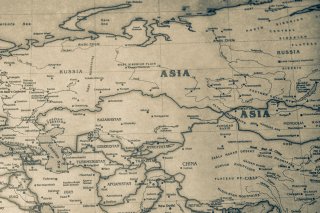What is U.S. Central Asia Policy?
The United States should rid itself of security entanglements in Central Asia and work toward building a mutually beneficial economic relationship.
On September 19, President Joe Biden met with all five leaders of the Central Asian countries at the UN General Assembly in New York as part of the “C5+1” summit. This marks the first meeting between a U.S. President and every Central Asian leader. Such a significant meeting was sure to make analysts wonder if it would generate a change in the direction of U.S.-Central Asia policy. However, the meeting harped on similar themes that are par for the course in previous C5+1 summits.
“I think this is a historic moment. We’re building on years of close cooperation between Central Asia and the United States—a cooperation that is grounded in our shared commitment to sovereignty, independence, territorial integrity,” Biden told the leaders during his remarks. Topics for the meeting included renewable energy, humanitarian causes, U.S. investment in Central Asia, and regional security.
Regional security cooperation has strongly characterized U.S.-Central Asian policy, especially since the advent of the Global War on Terror following the September 11 attacks carried out by Al Qaeda on the United States in 2001. While the development of Caspian energy sources was the main focus of U.S. policy toward Central Asia before 9/11, eliminating threats in Afghanistan became the main objective. As part of this initiative, Washington established temporary bases in Uzbekistan and Kyrgyzstan, both of which have closed.
The U.S. military’s chaotic but necessary withdrawal from Afghanistan signaled that the United States had completed its objective to secure the U.S. homeland, capture Khalid Sheikh Mohammed, the mastermind of 9/11, and kill Osama bin Laden. Despite the United States' failure to install a liberal government, a misguided endeavor, peace finally exists in Afghanistan.
Regardless of Kazakhstan’s concerns about Russia potentially invading their country after Ukraine, the prospect of this happening is relatively low. Russia’s vaunted military is floundering in Ukraine as Russian President Vladimir Putin has been unable to complete his maximal goals of subjugating Ukraine and turning it into a vassal state.
Leading cooperation with Central Asian states by lecturing them about human rights and democratic practices is also counterproductive. Prior rhetoric that has been rampant throughout the Biden administration regarding “a battle between democracies and autocracies” will only push Central Asia closer to Russia and China.
Instead, talks between the United States and Central Asian countries should be centered around U.S. interests, mainly concerning economic initiatives. One simple thing that can be done to facilitate private-sector engagement in Central Asia would be to remove Kazakhstan, Central Asia’s largest economy, from the 1974 Jackson Vanik Amendment, a law designed to punish the Soviet Union on Jewish immigration issues that is still on the books but has been waived for Russia. While the case for Uzbekistan and Tajikistan is less clear-cut than Kazakhstan’s, the United States can construct a clear pathway for these countries to attain normal trade relations with the United States.
Additionally, emphasizing alternative trade routes, namely the expansive “Middle Corridor,” a route that spans the Central Asian steppe, the Caspian Sea, and the Caucasus Mountains, should be the primary focus for the United States in discussions with Central Asian leaders. Amid a lack of viable alternatives, the “Middle Corridor” will only become more critical as the Russo-Ukrainian War inhibits other trade routes that flow through Russia. Alternatively, the Middle Corridor can transport Chinese goods to European consumer markets while avoiding Russia. With a length 2,000 km shorter than Russia’s Northern Corridor, the Middle Corridor offers a solution to sanction-compliance issues, access to new markets, and new opportunities for business-to-business (B2B) and business-to-government (B2G) engagements.
Central Asia is home to various natural resources, including oil and gas and critical minerals. At the same time, Central Asian countries are currently experiencing energy shortages, mainly due to their decrepit gas and power infrastructure. The United States has invested in Central Asian energy, particularly in Kazakhstan, as in 2019, U.S. firms contributed 30 percent of all oil production in the country. To expand Central Asia’s energy production potential, the United States can work with Central Asian states by improving their infrastructure, unlocking their potential to supply the West with energy, and creating a lasting, mutually beneficial relationship.
Critical minerals will be vital for Central Asia and the West in pursuing renewable energy sources. While fossil fuels will be necessary for countries in Central Asia, Europe, and the United States in the short term, the United States and Europe can collaborate with Central Asian countries on technologies that provide them with replacements for oil and gas exports in the long run—including by helping Kazakhstan, which accounts for 40 percent of the world’s uranium output, find a more prominent role for critical mineral processing.
The United States has limited interests in Central Asia but a wide variety of opportunities to address Washington’s energy needs. However, the United States is obfuscating these narrow areas of cooperation by returning to its militaristic tendencies in emphasizing Central Asia security and territorial integrity. Now is the time to discard security entanglements and embrace a new strategy focused on vital U.S. interests, including Washington’s economic prosperity.
Alex Little is an MS graduate of Georgia Tech and specializes in Russian and Central Asian affairs.
Image: Shutterstock.

